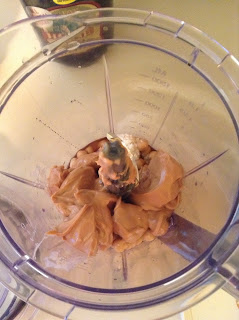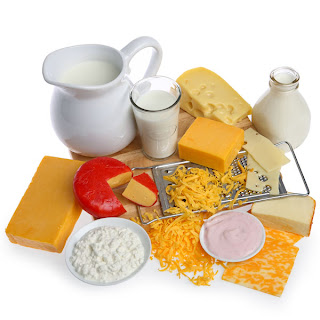Flare Up Friendly
Foods
As I've mentioned
before, I have Crohn's disease. It's
surprising how many people I run into on a daily basis that have this disease
or a similar inflammatory bowel disease.
The unfortunate thing with this disease is that it is an autoimmune
disease, and although there are certain foods that act as triggers to this
disease, at other times it just seems to have a mind of its own and will rear
its ugly head whenever it please:/. If
anyone reading this (or if you know anyone who has this or a similar disease)
has this disease then you know how terrible a flare up can be. My flare up symptoms keep me up late at night
or really early in the morning with painful lower abdomen cramping as well as
trips to the bathroom. It's at these
times that you want to be VERY careful what foods you put into your body. There were times when I had a flare up and I
was scared to eat anything...fearing that later when my body would try to digest
it I would suffer the horrible stomach cramps.
Unfortunately, everyone is a little different when it comes to what foods
trigger this disease. Recently I had a
flare up that lasted almost three weeks and I did a lot of research to figure
out which foods helped during a flare up and which foods to avoid.
When I was up at three in the morning with stomachaches I watched countless
Youtube videos and read several articles on Crohn's disease and flare up
friendly diets. My fear is losing weight
during a flare up. I'm already a fairly
thin person so losing eight pounds is a big deal to my body structure. (That's how much weight I lost during this
last flare up I had and I'm still working at putting it back on). Thank God my boyfriend is patient and understanding
with me and my disease! He was such a
help during my last episode. He made
trips to the health food store for me, selected calorie-dense, healthy foods
for me, and asked how I was feeling around the clock. I am blessed!
So with his help, here is the "Becky Flare Up Friendly Food
List." Please share with anyone you
know who suffers from Crohn's, ulcerative colitis, and IBS. Also note that I am NOT a physician and these
are merely strategies and foods that have helped me during a flare up (please
don't sue me!!:).
Flare Up Friendly
Food List:
1. Svelte Organic Protein Shakes
These are the
organic versions of Ensure or Boost. These
things rock and my favorite flavor is chocolate (because I'm a chocoholic!) but
the Chai tea flavored one is delicious too.
These are almost 16 fluid ounces and have 260 calories in them and 16
grams of protein. There are several
other vitamins and minerals as well.
These shakes are digested in the small intestine (often times Crohn's
affects the large intestine) and help you get your daily calories as well as
protein. They even taste pretty good! If
you are allergic to soy do NOT drink these...soybeans are the main source of
protein in these shakes. They are
dairy-free and gluten-free as well which is a double bonus because gluten and
dairy are often times hard to digest and can be triggers for flare ups.
2. Aloe Vera Juice
Aloe is known for its very calming and
soothing qualities. Try to get a high quality
aloe vera juice with chunks of the aloe plant in it. This made sound weird but the chunks of the
plant are gel-like in consistency and coat the inside of your inflamed
gastrointestinal tract and help stop the inflammation. The texture in the juice may take some
getting used to, but it's worth healing your poor insides!
3. Nut Butters
My best friend
during times of flare ups are individual packets of almond butter (smooth, not
crunchy). You can throw them in your
purse and snack on them at any moment.
Nut butters in general are great for flare ups because they have
calories, healthy fats, and protein that your body needs. You can try eating nuts as well but be sure
to chew WELL because you don't want the fiber irritating your intestines. To be safe, though, I would just stick with
smooth nut butters.
4. Rice/Rice Krispie Treats
Now, normally I
wouldn't recommend eating white rice because we all know that brown has more
nutrients and fiber. HOWEVER, during
times of crisis (a.k.a. flare up time) fiber is the enemy! At least, insoluble fiber is the enemy. Fiber normally is a very healthy thing that
cleans your innards and moves things along in the GI tract, but when you are
dealing with sensitive, inflamed guts fiber must be avoided. I have not noticed any issues when eating
white rice during a flare up. I even had
a sushi roll with only salmon, white rice, avocado, and nori and it didn't
cause any stomach cramping. This may not
be the case with everyone, as grains are controversial and affect people
differently, but for me it was one of the few things my body could tolerate so
I ate it. I also indulged in Rice Krispie
treats - which have preservatives and high fructose corn syrup (I call HFCS
crack;) in them but I was desperate and ironically it didn't bother my
belly. The puffed rice was easy to
digest and I was thankful for the calories (even if empty calories) it offered
to me. Since whole wheat and white flour
(gluten) are very inflammatory foods, it was nice to have white rice as an
option.
5. Apple Sauce and Pear Sauce
Apples and pears
contain a chemical called pectin. Pectin
is the chemical used to stabalize foods and cause jams and jellies to gel. Pectin can be soothing to your GI tract as it
causes digested foods to gel and can help prevent diarrhea. I would personally recommend eating applesauce
or pear sauce versus fresh apples and pears because there is, again, less
fiber.
6. Salmon and Trout
I ate a piece of
fish almost everyday of my flare up once I figured out it didn't bother my
body. Salmon and trout have healthy
Omega-3 fats that help your body heal and rebuild. Fish also offers protein which your body will
need especially during flare ups.
7. Cooked Green Beans
I eat tons of
vegetables when I'm not having a flare up, however, a lot of veggies
(especially salads) aggravate my system when I am having a flare up. One veggie that I noticed didn't bother me
was cooked green beans. I crave veggies
normally, but when I can't eat them due to a flare up it's like I crave them
even more! At least cooked green beans
agree with me:).
8. Turkey and Chicken without Skin
Turkey was a food
that didn't bother me either. Even
chicken didn't cause any problems as long as I was diligent about removing the
skin. The key here is lean
proteins. Anything too fatty can be hard
to digest, but lean meats should be fairly easy to digest as well as keep you
nourished.
I hope this list
of foods will help you or someone you know during times of turmoil and
uncomfortable flare ups. If you have any
other suggestions please don't hesitate to comment or email me.
pinterest@Foodblot




























.jpeg)








